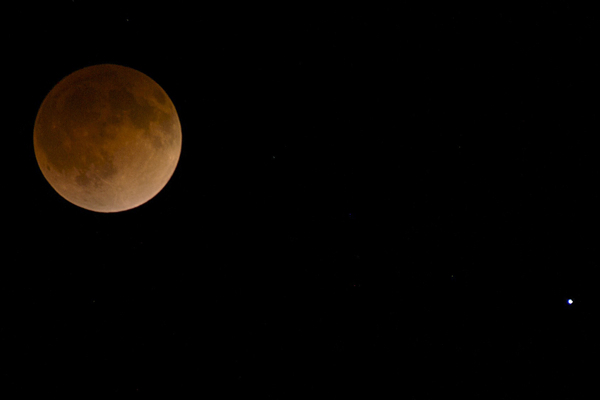
Tonight, over the skies of Evanston, you will be able to see a combination of two rare astronomical phenomena. First is the (very spooky-sounding) Super Blood Moon, which hasn’t happened since 1982 and won’t happen again until 2033. Second is a full lunar eclipse. We’ve put together a guide with all the details on the eclipse and the best places to watch it on campus.
What is a lunar eclipse?
Lunar eclipses happen when the moon passes behind the Earth and into its shadow. The scientific term for this alignment of the sun, the Earth and the moon is “syzygy,” and working this into your astronomy paper could score you some points with your professor.
Syzy-what?
Si-zi-jee. Used in a sentence: Lunar eclipses are caused by the syzygy of the sun, the Earth and the moon. Worth at least 25 points in Scrabble.
How do I watch the eclipse on campus?
The Center for Interdisciplinary Exploration and Research in Astrophysics is hosting a viewing party tonight, from 8 to 11:30 p.m., on the top level of the Segal Visitors Center parking garage. You'll be able to watch the eclipse through multiple telescopes and ask astronomers of your science questions. (Here’s a link to the Facebook event with all the details). The total eclipse is estimated to happen at 9:47 p.m.
Why is the moon red?
It's a similar reason to why sunsets appear reddish. Brace yourselves, this is going to take you back to seventh grade science.
Basically, visible light is made up of a range of wavelengths, with the shorter wavelengths appearing violet and the longer ones appearing red. When sunlight passes through the Earth’s atmosphere, the shorter wavelengths are scattered by air particles and pollution. By the time the light reaches the moon, it’s mostly made up of the longer wavelengths, so the moon appears red.
What's a supermoon?
A supermoon is when a full moon occurs at the point in its orbit when it’s closest to the Earth i.e. the perigee. This makes the moon appear significantly larger than normal. Technically, “supermoon” is not an astronomical term and scientists prefer to call it perigee-moon instead, but don’t worry, we won’t judge you.
If I am a werewolf should I be afraid of the supermoon?
Yes. Unless you've had Severus Snape brew you the Wolfsbane Potion – but even in that case you probably shouldn’t go to the Segal Visitor’s Center and instead just stay somewhere safe and wait for the full moon to set.
Whose face is the Man in the Moon?
The term “Man in the Moon” is actually quite problematic. It is yet another example of the way our cis- and heteronormative society unnecessarily genders the most mundane phenomena. There is no human being “in” the moon, and even if there were it’s very presumptuous to decide that they are a man without allowing them to express their own gender identity. Fuck the patriarchy.
What can we all learn from this rare event?
Even if it feels like you’re surrounded by darkness, you’ll eventually get through it. People still love you anyway. Also science is awesome.